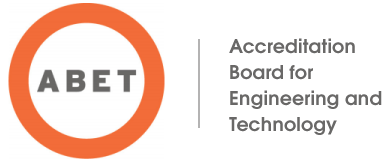Computer Graphics Technology Program
Combine technical and creative skills to design, analyze and communicate ideas visually. Prepare for a career in industry, advertising, gaming, education, entertainment, construction, web development and beyond.
Accreditation
 ABET Engineering Technology Accreditation Commission: The Computer Graphics Technology Program at Purdue University is accredited by the Engineering Technology Accreditation Commission of ABET, http://www.abet.org, under the commission’s General Criteria with no applicable program criteria.
ABET Engineering Technology Accreditation Commission: The Computer Graphics Technology Program at Purdue University is accredited by the Engineering Technology Accreditation Commission of ABET, http://www.abet.org, under the commission’s General Criteria with no applicable program criteria.
HLC: All Purdue University programs are institutionally accredited by the Higher Learning Commission, https://www.hlcommission.org/
Program Educational Objectives:
- Recognize and demonstrate their breadth and depth of knowledge as practicing professionals or engage in graduate education.
- Apply and analyze their computer graphics knowledge to critical thinking and quantitative reasoning problems with an effective expression to persuade others to their images and ideas.
- Synthesize all forms of information, combining elements in a different way to form new ideas and make judgements about information based on discovered criteria.
- Utilize interdisciplinary graphics perspectives with an understanding of the powers and limits of each field and of the kind of contribution each can make; understand computer graphics phenomena as a complex whole and engage in professional development in their profession by adapting to new technology and career challenges.
- Utilize inter- and intra-cultural understanding to recognize how their thoughts and actions are influenced by culture, helping them to understand a set of cognitive, affective and behavioral skills and characteristics that facilitate effective and appropriate interaction among peers within a professional team environment.
Student Learning Outcomes
Graduates of the Bachelor of Science degree programs in Computer Graphics Technology will achieve the following learned capabilities:
- an ability to apply knowledge, techniques, skills and modern tools of mathematics, science, engineering, and technology to solve broadly-defined engineering problems appropriate to the discipline;
- an ability to design systems, components, or processes meeting specified needs for broadly-defined engineering problems appropriate to the discipline
- an ability to apply written, oral, and graphical communication in broadly-defined technical and non-technical environments; and an ability to identify and use apprpriate technical literature;
- an ability to conduct standard tests, measurements, and experiments and to analyze and interpret the results to improve processes; and
- an ability to function effectively as a member as well as a lead on technical teams
Enrollment Trends
| 2008-2009 | 2009-2010 | 2010-2011 | 2011-2012 | 2012-2013 | 2013-2014 | 2014-2015 | 2015-2016 | 2016-2017 | 2017-2018 | 2018-2019 | 2019-2020 | 2020-2021 | 2021-2022 | 2022-2023 | 2023-2024 | 2024-2025 | |
|---|---|---|---|---|---|---|---|---|---|---|---|---|---|---|---|---|---|
| West Lafayette | 450 | 425 | 401 | 378 | 326 | 335 | 366 | 386 | 441 | 511 | 575 | 620 | 663 | 660 | 666 | 687 | 684 |
| New Albany | - | - | - | - | - | - | - | 36 | 48 | 48 | 45 | 45 | 36 | 27 | 31 | 19 | - |
| Richmond | - | - | - | - | - | - | - | 18 | 21 | 28 | 27 | 32 | 30 | 24 | 13 | 7 | - |
Number of Graduates
| 2008-2009 | 2009-2010 | 2010-2011 | 2011-2012 | 2012-2013 | 2013-2014 | 2014-2015 | 2015-2016 | 2016-2017 | 2017-2018 | 2018-2019 | 2019-2020 | 2020-2021 | 2021-2022 | 2022-2023 | 2023-2024 | |
|---|---|---|---|---|---|---|---|---|---|---|---|---|---|---|---|---|
| West Lafayette | 108 | 110 | 103 | 101 | 95 | 78 | 66 | 104 | 95 | 97 | 106 | 115 | 152 | 171 | 142 | 151 |
| New Albany | - | - | - | - | - | - | - | - | 5 | 9 | 11 | 12 | 11 | 4 | 10 | 3 |
| Richmond | - | - | - | - | - | - | - | - | 1 | 6 | 4 | 6 | 6 | 7 | 2 | 1 |
Enrollment Trends and Number of Graduates data is sourced from Purdue’s Office of Enrollment Management's Data Digest.